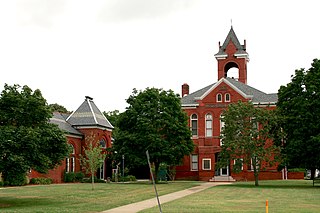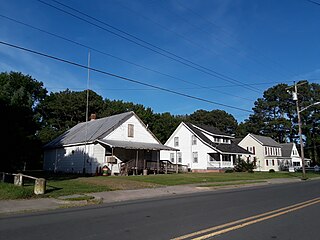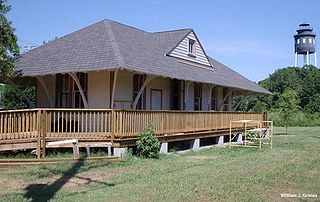
The Delmarva Peninsula, or simply Delmarva, is a large peninsula on the East Coast of the United States, occupied by the vast majority of the state of Delaware and parts of the Eastern Shore of Maryland and Eastern Shore of Virginia.

Somerset County is the southernmost county in the U.S. state of Maryland. As of the 2020 census, the population was 24,620, making it the second-least populous county in Maryland. The county seat is Princess Anne.

Worcester County is the easternmost county of the U.S. state of Maryland. As of the 2020 census, the population was 52,460. Its county seat is Snow Hill.

Northampton County is a county located in the Commonwealth of Virginia. As of the 2020 census, the population was 12,282. Its county seat is Eastville. Northampton and Accomack Counties are a part of the larger Eastern Shore of Virginia.

Accomack County is a United States county located in the eastern edge of the Commonwealth of Virginia. Together, Accomack and Northampton counties make up the Eastern Shore of Virginia, which in turn is part of the Delmarva Peninsula, bordered by the Chesapeake Bay and the Atlantic Ocean. Accomac is the county seat.

Smith Island is a collection of three distinct island communities – Tylerton, Rhodes Point, and Ewell, Maryland – on the Chesapeake Bay, on the border of Maryland and Virginia territorial waters in the United States. The island is the last inhabited island in Maryland that is not accessible by vehicle. Most of the islands are eroding due to tidal currents and sea level rise; a study conducted in 2008 by the DNR reported that Smith Island is expected to completely erode by 2100 if no action is taken.

Pocomoke City, dubbed "the friendliest town on the Eastern Shore", is a city in Worcester County, Maryland, United States. Although renamed in a burst of civic enthusiasm in 1878, the city is regularly referred to by its inhabitants simply as Pocomoke. The population was 4,184 at the 2010 census. It is part of the Salisbury, Maryland-Delaware Metropolitan Statistical Area. Pocomoke City is a center for commerce on the lower shore, home to an industrial park currently playing host to defense contractors, aerospace engineering, and plastics fabrication. Pocomoke City is located near the Wallops Island Flight Facility in Wallops Island, Virginia.

Accomac is a town in and the county seat of Accomack County, Virginia, United States. The population was 526 at the 2020 census.

Melfa is a town in Accomack County on the Eastern Shore of Virginia in the United States. The population was 408 at the 2010 census.

Onancock is a town in Accomack County, Virginia, United States. The population was 1,263 at the 2010 census.

Parksley is a town in Accomack County, Virginia, United States. The population was 842 at the 2010 census. It is home to the Eastern Shore Railway Museum.

Tangier is a town in Accomack County, Virginia, United States, on Tangier Island in the Chesapeake Bay. The population was 436 at the 2020 census. Since 1850, the island's landmass has been reduced by 67%. Under the mid-range sea level rise scenario, much of the remaining landmass is expected to be lost in the next 50 years and the town will likely need to be abandoned.

Wachapreague is a town in Accomack County, Virginia, United States. The population was 257 at the 2020 census.

Cape Charles is a town / municipal corporation in Northampton County, Virginia, United States. The population was 1,009 as of the 2010 Census.

Nassawadox is a town in Northampton County, Virginia, United States. Per the 2020 census, the population was 533. The town, with an area of 0.4 square miles (1.0 km2), is located on U.S. Route 13 on Virginia's Eastern Shore, approximately five miles south of Exmore and 25 miles (40 km) north of the Chesapeake Bay Bridge-Tunnel.

The Eastern Shore of Virginia is the easternmost region of the Commonwealth of Virginia in the United States. It consists of two counties on the Atlantic coast. It is detached from the mainland of Virginia by the Chesapeake Bay. The 70-mile-long (110 km) region is part of the Delmarva Peninsula. Its population was 45,695 as of 2020.
Mark's and Jack's Island Natural Area Preserve is a 2,305-acre (9.33 km2) Natural Area Preserve located in Accomack County, Virginia. The preserve supports Chesapeake Bay beach habitat, as well as various types of marsh, shrub, and forest vegetation. Many species of birds can be found in the preserve's wetlands, and numerous plant species live in the marsh, including marsh-elder. Loblolly pine and black cherry may be seen along the tops of some old dunes. The beaches provide a home for the northeastern beach tiger beetle.
Saxis Wildlife Management Area is a 5,578-acre (22.57 km2) Wildlife Management Area (WMA) in Accomack County, Virginia. Predominantly tidal marshland, it is divided into three tracts, all located on peninsulas bordering on brackish waters such as Beasley Bay, Pocomoke Sound, and Messongo Creek. Several smaller freshwater creeks are also found on the property. Portions of the area farthest inland are occupied by hummocks. The property is maintained by the Virginia Department of Game and Inland Fisheries mostly in its natural state, with little in the way of human management or development.
Tangier Sound is a sound of the Chesapeake Bay bounded on the west by Tangier Island in Virginia, and Smith Island and South Marsh Island in Maryland, by Deal Island in Maryland on the north, and the mainland of the Eastern Shore of Maryland and Pocomoke Sound on the east. It stretches into Virginia as far south as Watts Island.
Pocomoke Sound is a bay of the Chesapeake Bay that forms part of the boundary between the Eastern Shores of Maryland and Virginia. The Pocomoke River is the largest stream feeding into the Sound, which is bounded by Somerset County, Maryland on the north, Worcester County, Maryland, Accomack County, Virginia, and Beasley Bay on the east, the Chesapeake Bay on the south, and Tangier Sound on the west. Its southwesternmost point may be considered to be Watts Island, Virginia.
















